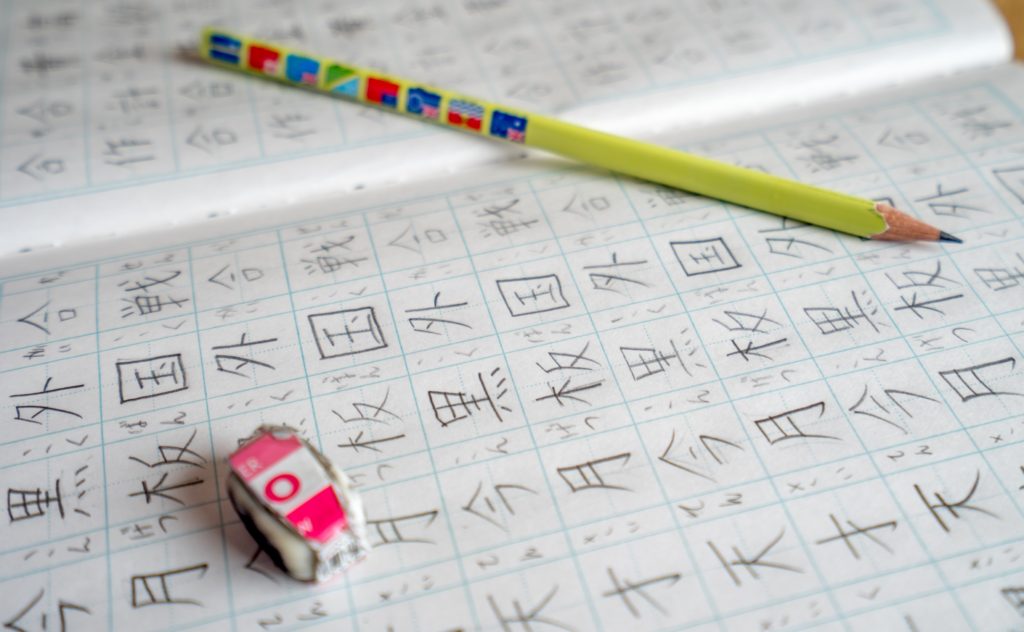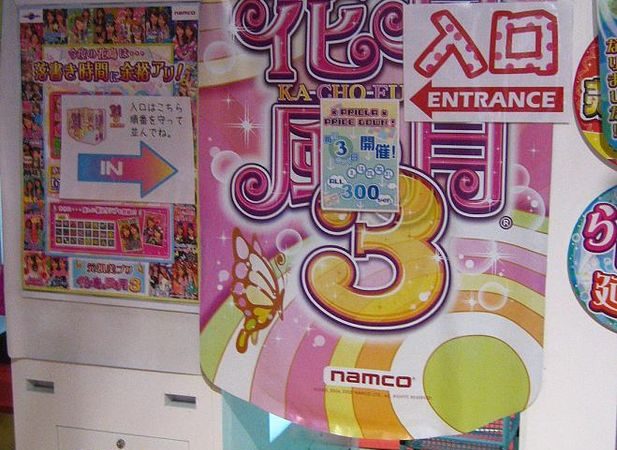This post is also available in:



Why is Japanese so hard to learn?
Learning a new language may be tough at first, but persevere, and the results of all your hard work will be worth it. The basics of Japanese are not difficult to learn at first, the most difficult part may be getting your head around changing verb and adjective forms because Japanese has no auxiliary verbs like English. We suggest you learn Japanese as your second or third language because it’s so much more interesting than can be imagined.
The easiest direct way is leaning from Japanese people. It’s great to have your own Japanese adviser (A.K.A. Japanese boyfriend/girlfriend). This way you can practice your Japanese as much as you like… in fact, your relationship may depend on it – excellent motivation. If you are looking for a Japanese partner follow this link to know more about Kiyomizu Dera and it’s shrine famous for bringing people together. The vital part is the depth of your will. You must genuinely wish for a Japanese partner. To reach the most potential it’s recommended you buy an omomori charm and return to renew it every year (but it shouldn’ take that long to find your other half don’t worry). And it works, I’ve seen it happen! But anyway we are here to research how to learn Japanese so let’s get back on point!
1. Remembering Japanese alphabets
As a beginning step, remembering the Japanese alphabets is essential. Japanese has 2 forms of phonetic writings: Hiragana (ひらがな) and Katakana (カタカナ). They share a similar pronunciation but are different alphabets.
Katakana is mainly a writing style used for Japanese words borrowed from other languages, whereas Hiragana is the basic Japanese phonetic alphabet. In addition, everyone learning the Japanese language shares a similar problem of remembering kanji (漢字), adopted from Chinese characters. Even Japanese people have the same problem. It’s difficult to remember all the kanji that exists in the SUPER thick dictionary. Generally speaking, they know at least 2,000+ kanji which usually appears in daily life.
Many kanji meanings can be easily guessed with this little tip.
Basic kanji can be transformed to other kanji words.
1. 水 (みず mizu = water) → 涙 (なみだ namida = tear). The first 3 strokes means the water, whereas 戻る (もどる = modoru) means to return, to recover.
2. 火 (ひ hi = fire) → 炎 (ほのお honor = inflammation, flame) or → 煙 (けむり kemuri = smoke). As you can see, all of kanji, which compose of 火 represents similar meaning, that relates to fire.
3. 木 (き/もく ki/moku = tree) → 林 (はやし hayashi = grove) or → 森 (もり mori = forest). I memorized tree (木) double tree (林) and triple tree (森) when I did a kanji exam and that’s how I came to remember them. 森林 (しんりん shin rin = woods) can be combined together but the meaning still relates to tree.
4. 日 (ひ/ニチhi/nichi = day, sun) → 明るい (あかるい akarui = light/bright) or → 旬(じゅん/しゅん jun/shun = season). All kanji words are related to day or sun.
When they are mixed with other characters or stokes, it is easy to guess that kanji has a meaning that relates with water, fire or tree. Rather than the meanings, it’s the on-yomi and kun-yomi (kanji reading patterns) that can cause the real pain.
If the kanji stands alone, it can usually be read in the kun-yomi pattern, while the on-yomi pattern is used when paired with another kanji. For example, 山 can be read as やま yama (kun-yomi) or サン san (on-yomi). The on-yomi is usually written in Katakana in the dictionary. The single kanji is usually read in the kun-yomi pattern, with other kanji they are pronounced in on-yomi style such as 富士山 (ふじサン Fuji san = The Fuji Mountain), 火山 (かザン kazan = volcano), 登山 (とザンtozan = mountain clambing)
Likewise, here is some tried and tested advice on how to read kanji. It’s quite confusing when deciding if the kanji reading needs to have a ten-ten (double quote = “) or maru (circle = º). This will help you better understand this problem. When you see 口 (くち kuchi = mouth) alone, do not put ten-ten when you read or write it, but if it comes after another kanji it usually has a ten-ten such as 窓口 (まどぐち mado guchi= ticket window, contact person), 出口 (でぐち de guchi = exit), 南口 (みなみぐち minami guchi = south entrance).
A suggestion for people who really want to remember each kanji is to focus on ‘writing’. It just goes back to basics, the same as kindergarten students who have to write A B C. Since I have started leaning Japanese, I have written kanji as often as I can to remember not only the characters but also the meaning.
Some kanji that I find interesting are the similar characters such as 表 (おもてomote = surface) and 麦 (むぎmugi = barley) who share the upper part which comes from 土(つち tsuchi = soil) or 素 (もと moto = elementary, uncovered) and 索(さくsaku = cord) have 糸 (いと Ito = thread) at the bottom part.
2. Having an awesome dictionary application
You can learn a lot from your phone more than books
Nowadays, it easily finds word’s meaning in your phone with just a single touch. My recommendation application is ‘Japanese’. For iOS For Android
In this application they show kun-yomi, on-yomi, stroke order, the meaning and Kanji’s components. The easiest way to remember stroke order is you have to start to write stoke at the top of the left-hand side from the top to the bottom and from the left to the right. Another great feature is that this application shows Kanji’s common compounds. These common compounds are useful when you want to search more vocabularies. Moreover, the application provides sentences, which are great to find out how to use each word in a different context and increases your vocabulary too!!
3. Joining a free Japanese class
You read correctly; it is really FREE!
There are free Japanese schools in each city in Japan. Japanese volunteers gather on a specific day and time to offer foreigners in Japan free Japanese lessons with no charge. I live in Fuchu, Tokyo. I usually join my local class at ‘Fuchu international salon’. First of all, you have to register for a class by writing your personal information. Then, just choose the convenient day and time to join the class (2hours/class). For example in my school: Monday: 10.00~12.00 and 14.00~16.00, Wednesday: 14.00~16.00, Friday: 14.00~16.00 and 19.00~21.00. Every class in this school is a private class (1 volunteer teacher per 1 student). So do not be shy to speak and take the awesome class here!
Even better, they have many rare and expensive Japanese books and JLPT mock tests provided for you to learn. Similarly, you can have a conversation in Japanese with native speakers. Do not be afraid to speak Japanese because if you make mistakes the volunteers will kindly correct your sentences. You are not only learning 4 skills (listening, writing, speaking and reading), but you can make new friends also. For more details please visit their website and check it out.
4. The best beginner level Japanese textbooks
You will be able to speak Japanese within 3 months, IF you use the best Japanese text book for learning.
Many language schools use ‘Minna no nihongo’ (みんなの日本語) as a major text book. However, but it’s difficult for beginners if you are self-taught.
My friends from Australia recommended the ‘Genki’ (げんき) textbook when I planned to learn the Japanese language before living in Japan last year. From my experience, I could speak Japanese with confidence within 3 months. (Disclaimer: I studied as hard as I could, 7 hours+ per day). You can even practice listening skill and speaking skill in the lesson in this textbook. Moreover, this textbook describes grammar deep in detail, which can be easily understood for foreigners. I was able to make simple sentences for surviving in Japan in the first few weeks. The reading skill is also important for studying Japanese. The Genki text book gives you simple essay paragraphs for beginner level to learn and more difficult articles are provided depending on the lesson.
5. Copying speaking sentences from Japanese drama NOT animation
Many Japanese leaners love anime. I also love watching animation. My favorite anime is ‘ONE PIECE’. I can even remember Luffy’s sentence ‘海賊王に俺はなる’ (I am going to become the Pirate King! ) and Brook’s favorite sentence ‘パンツ見せてもらってもよろしいでしょうか’ (May I see your panties).
However, I cannot use those sentences in my daily life! Likewise, I love watching Detective Conan, but most vocabularies I learned are 殺人事件 (さつじんじけん satsujinjinken = murder case), 犯人 (はんにん hannin = culprit) or 連続殺人 (れんぞくさつじん renzokusatsujin = serial murder). I am neither Conon nor Mori-san who always meet murders and corpses every episode. Nevertheless, I recommend you to watch Japanese drama. The sentences and words used in dramas are those which native speakers actually use. You can imitate those sentences when you speak Japanese. The more you can remember, the more you can frequently use those sentences in routine life.
6. Learning te-form from music
Japanese verbs have many transformation ways such as te-form, passive form, causative form, potential form and volitional form. Each transforming forms are used based on a different rule. Moreover, Japanese verbs are unique because they are transformed when adding かった at the end of a verb. It will be a piece of cake if you know the techniques.
Most beginners have the same problem transforming verbs, especially the te-form (て-形). First of all, you must know that Japanese verbs are arranged into 3 groups which are U-verb, Ru-verb and irregular verbs. Each group has a different transforming verb rule which you must remember.
- Changing Ru-verb into te-form just removes ru and adds te. For example, 食べる (たべる taberu = to eat) → 食べて, 見る (みる miru = to see)
- U-verb group has to change based on the final syllable of their dictionary form
・With final う (u), つ (tsu) and る (ru) → って
会う (to meet) → 会って
待つ (to wait) → 待って
撮る (to take (photos)) → 撮って
・With final む(mu), ぶ(bu), ぬ(nu) → んで
読む (to read) → 読んで
遊ぶ (to play) → 遊んで
死ぬ (to die) → 死んで
・With final く(ku) → いて
書く (to write) → 書いて except 行く (to go) → 行って
・With final ぐ (gu) → いで
泳ぐ (to swim) → 泳いで
・With final す(su) → して
話す (to speak) → 話して
Remembering through song is my recommendation method because it is the easiest way to remember the rule.
- Transforming irregular verb group to te form is not as difficult as you think. All you have to do is to memorize these following patterns and you can change it anytime.
する (suru) → して
来る (kuru = to come) → 来て
te-form is usually used with ください for making a polite request to another person or used with もいいですか for asking a permission or used with はいけません for denying someone’s permission. Thus, te-form can be used in many difference ways.
Japanese is not hard to learn!
Learning the Japanese language does not only promote escalation in studying or working but also traveling. In the last 2 years, I could not speak Japanese at all when I first visited as an exchange student. I could not even order the food I wanted to eat in restaurants. That time I could not enjoy traveling in Japan as much as I wanted. It was difficult to survive in Japan. I started learning Japanese by myself soon after I found out I could stay longer in Japan. Transportation in Japan is fantastic and the trains easy to use if you understand Japanese applications such as Yahoo! 乗換案内. This application shows time, platform number and every train line or bus in Japan when you fill the station name (in Japanese). This application also tells you the first train of the day (始発 しはつ shihatsu) and the last train of the day (終電 しゅうでん shuden) which are essential to survive in Japan. As everyone knows the taxi fee in Japan is SUPER expensive, so it’s imperative not to miss the last train. The unfortunate thing is all of the words in this application are written in Japanese, and stations name’s are in kanji. Some products such as food in convenient stores have instructions on how to warm your food. If we don’t follow the instructions maybe the food will not turn out as intended. Indeed, Knowing the Japanese language makes your life easier. Do not waste time, let’s start to learn Japanese together!
Ferinmi/Thailand














